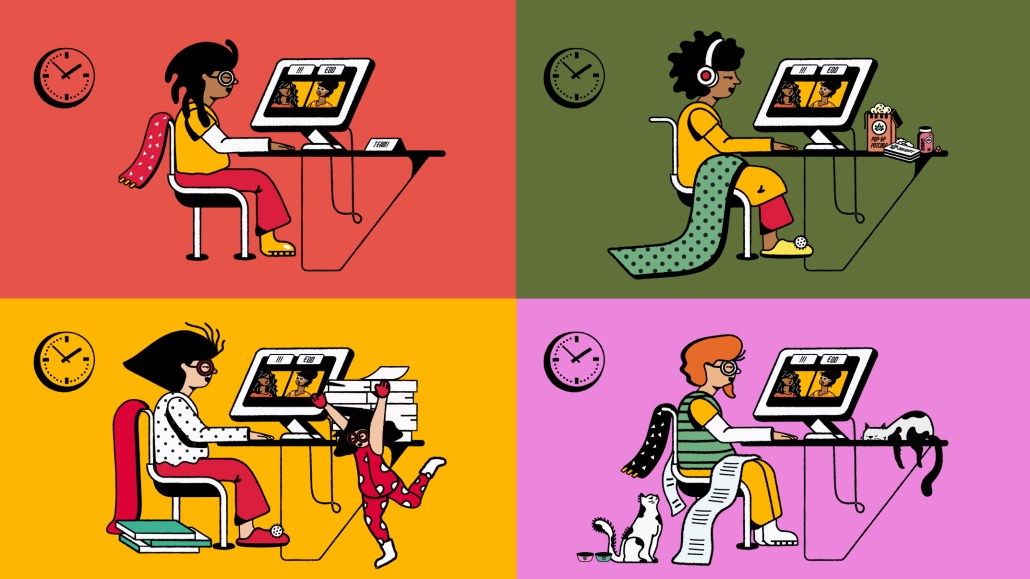Insights from CTV leaders at Dentsu, Horizon Media and more
Inside one prediction for how marketers’ strategies could be reshaped next year

In marketing, it seems the biggest constant is change.
These last few years have presented some of the biggest uncertainties in the industry — from the global pandemic and social justice issues to climate change and the ongoing economic downturn. In research firm WARC’s latest Future of Strategy report, marketing strategists highlighted some of the biggest economic challenges and industry trends they will face in 2023 and beyond.
“This year’s Future of Strategy reveals how strategists increased their influence with clients and delivered valuable insight through the COVID-19 pandemic,” said Anna Hamill, senior editor of brands at WARC, as quoted in the report. “The function is well placed to advise on the constant evolution of the media ecosystem and help brands navigate new priorities, especially in a time of ongoing uncertainty.”
The research identified several major trends that will impact marketers and strategists alike, including the ongoing talent shortage and some of the business problems CMOs face. Additionally, strategists also said helping brands demonstrate responsibility and ethical practices was a top priority, especially in sustainability.
“It’s certainly the case that strategy roles are taking longer to fill,” said James Addlestone, chief strategy officer at performance marketing agency Journey Further. “This has meant hiring ahead of the curve has been more important than ever, to avoid the risk of understaffing and subsequent burnout causing a snowball effect of staffing challenges.”
Here are some highlights from WARC’s strategy report surveying some 700 brand and agency strategists globally this summer.
The talent shortage is (still) real
WARC said clients are increasingly seeking strategists with generalist skillsets, but agencies are concerned about competing with strong tech and consultancy offers. Almost half (46%) of strategists said they are concerned about finding the right talent, with only 30% expecting their next strategy role to be at an agency as consultancies and brands compete for jobs.
This could mean agencies are hiring younger candidates that might not have the exact fit or experience now but can train them up. “With a clear training program alongside the right mentorship, [it] will ultimately make fulfilling a role quicker,” Addlestone said.
The cost-of-living ‘crisis’ will impact consumer habits
The economic trends brought on by inflation and recessionary fears that affect consumer behaviors have agencies and brands on the lookout, with 69% believing this will impact marketing communications — from tone to brand building.
Duncan Smith, U.S. CEO of Journey Further told Digiday: “During the financial crisis at the end of the aughts, we saw brands pivot in two ways — by focusing on lower cost, value-based product development, positioning and comms to boost volumes or by increasing line extensions of premium products to maintain margin and provide consumers with those small luxuries that tend to endure through leaner times.”
Industry diversity initiatives have a long way to go
WARC findings revealed a lack of progress in diversity at an industry level, with the researchers adding that there need to be more tangible changes in hiring to serve clients effectively on these issues. WARC also said agencies themselves are lacking diversity on their own teams, which affects their ability to deliver diverse insights and advice for clients
“Clients know that it’s socially unacceptable to not have DEI as part of your agenda… It doesn’t necessarily mean that clients understand how to truly deliver on DEI,” said Huiwen Tow, head of strategy in APAC at creative agency Virtue Worldwide.
More in Marketing

Creator marketing has the reach — CMOs want the rigor
The creator economy got big enough to be taken seriously.

Pitch deck: Why Google believes its latest AI Max product is a game changer for search campaigns
AI Max, which launched May and rolls out this summer, aims to provide advertisers with a “one-click feature suite” for search campaigns.

Retail media’s mid-2025 reality: Why advertisers are going all in on full-funnel
Retail media’s meteoric rise may finally be leveling off — and that’s forcing advertisers to take a harder look at what they’re getting for their money.








